International Steel Prices
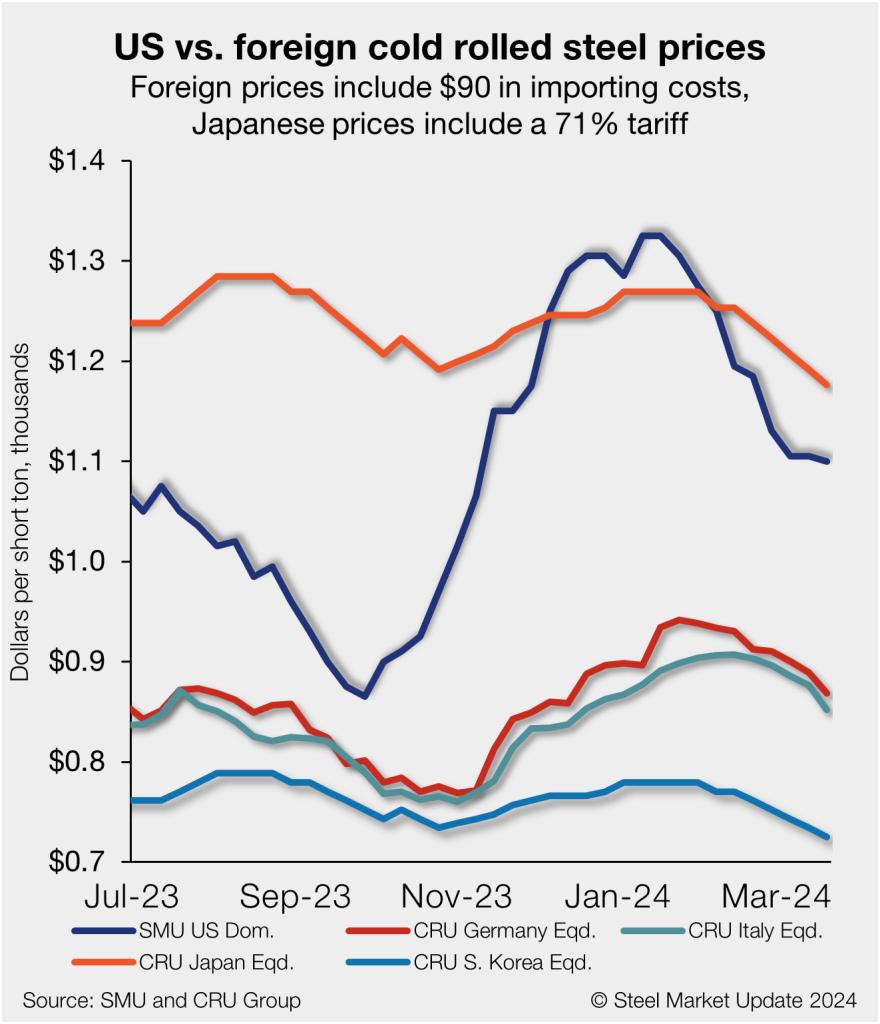
US cold rolled still more expensive than imports
Written by David Schollaert
March 22, 2024
Foreign cold-rolled (CR) coil remains notably less expensive than domestic product, even with repeated tag declines across all regions, according to SMU’s latest check of the market.
All told, US CR prices are now 22.1% more expensive than imports. The premium is up from 20.8% last week but still off from a high of 31.5% in early January. With speculation mounting that domestic tags may be near a bottom, offshore CR could become an even greater value should the spread widen.
In dollar-per-ton terms, US CR is now on average $195 per short ton (st) more expensive than offshore product, up $12 week over week (w/w) on average. This is still $116/st lower, however, from mid-January when the average premium for US CR over imported cold band saw a recent peak of $311/st.
This week, domestic CR tags were $1,100/st on average based on SMU’s latest check of the market on Tuesday, March 19. And even while US prices are now at their lowest level since early November, they continue to carry a large premium over imports.
Methodology
This is how SMU calculates the theoretical spread between domestic CR prices (FOB domestic mills) and foreign CR prices (delivered to US ports): We compare SMU’s US CR weekly index to the CRU CR weekly indices for Germany, Italy, and East Asia (Japan and South Korea). This is only a theoretical calculation. Import costs can vary greatly, influencing the true market spread.
We add $90 per short ton to all foreign prices as a rough means of accounting for freight costs, handling, and trader margin. This gives us an approximate CIF US ports price to compare to the SMU domestic CR price. Buyers should use our $90-per-st figure as a benchmark and adjust up or down based on their own shipping and handling costs. If you import steel and want to share your thoughts on these costs, please get in touch with the author at david@steelmarketupdate.com.
East Asian cold-rolled coil
As of Thursday, March 21, the CRU Asian CR price was $635/st, down $9/st w/w and down just $36/st from a month prior. Adding a 71% anti-dumping duty (Japan theoretical), and $90 per ton in estimated import costs, the delivered price to the US is $1,176/st.
The South Korean theoretical price is $725/st. The latest SMU cold rolled average is $1,100/st, down $5/st w/w, and down $85/st compared to one month ago.
The result: US-produced CR is now theoretically $76/st cheaper than steel imported from Japan but $375/st more costly than cold rolled imported from South Korea.
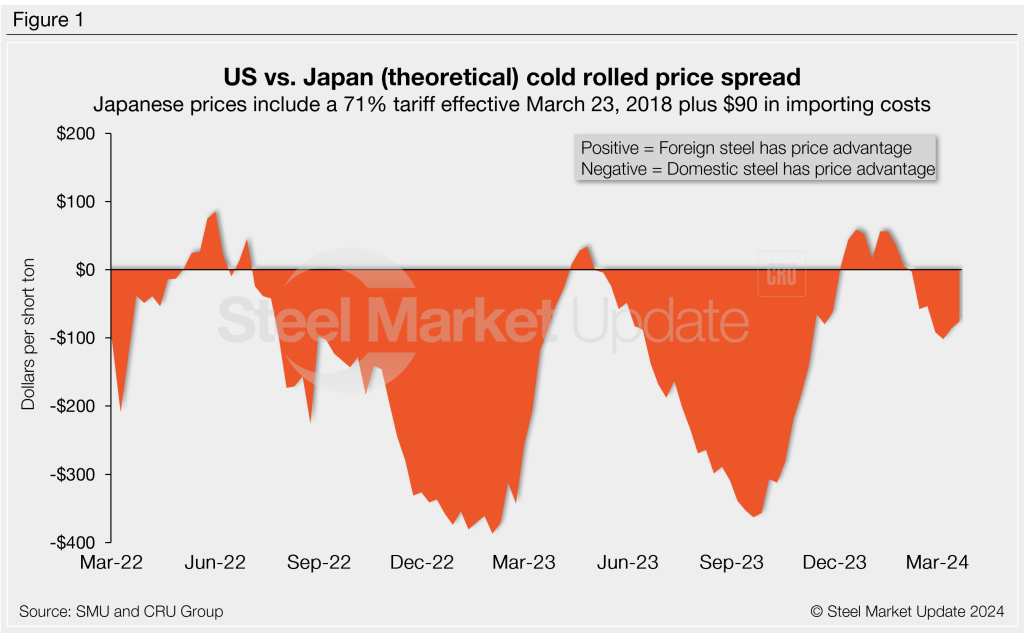
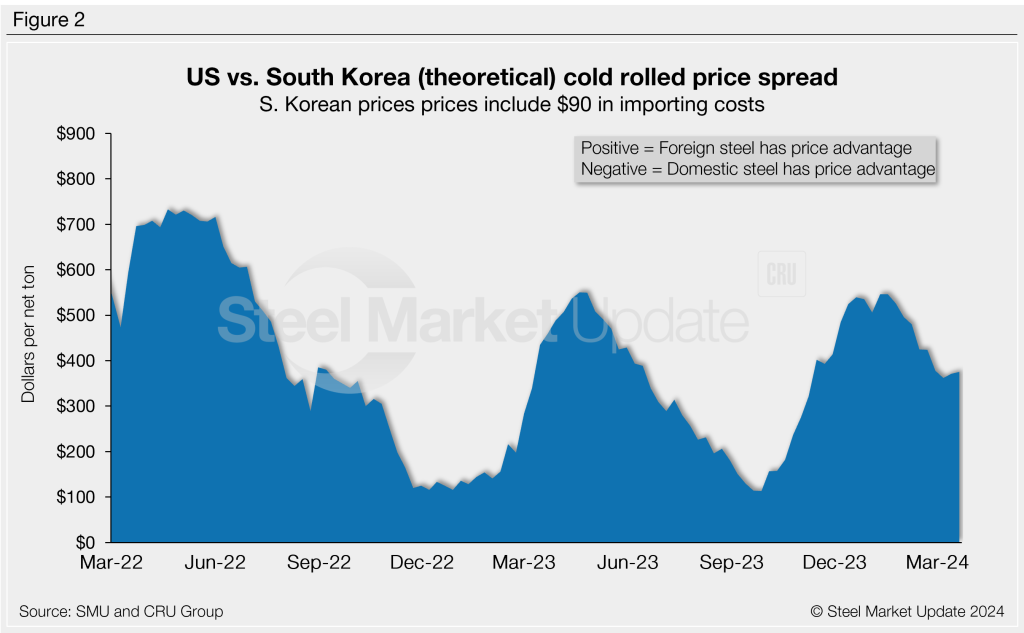
Italian cold-rolled coil
Italian CR prices were down $24/st to roughly $762/st this week. Italian prices are down now down $51/st from a month ago. After adding import costs, the delivered price of Italian CR is in theory $852/st.
That means domestic CR is theoretically $248/st more expensive than CR imported from Italy. The spread is up $19/st from last week, but the domestic cold band price premium over offshore product from Italy is down $205/st from a recent high of $453/st in mid-December.
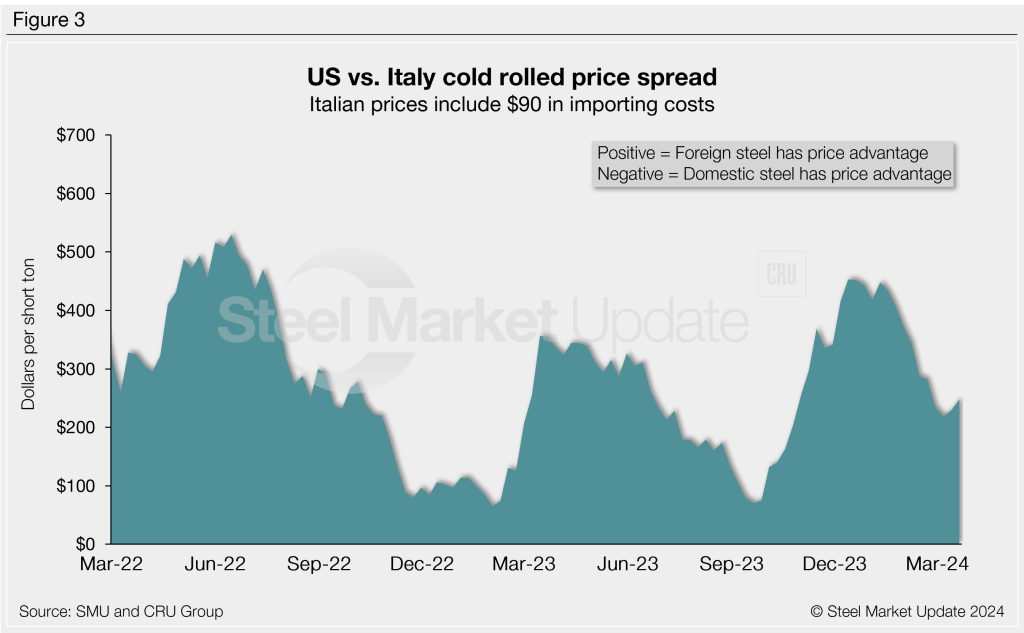
German cold-rolled coil
CRU’s German CR price ticked down 21/st vs. the week prior to $778/st. After adding import costs, the delivered price of German cold rolled is in theory $868/st.
The result: Domestic CR is theoretically $232/st more expensive than CR imported from Germany. The spread is still $196/st below a recent high of $428/st during the first week of 2024.
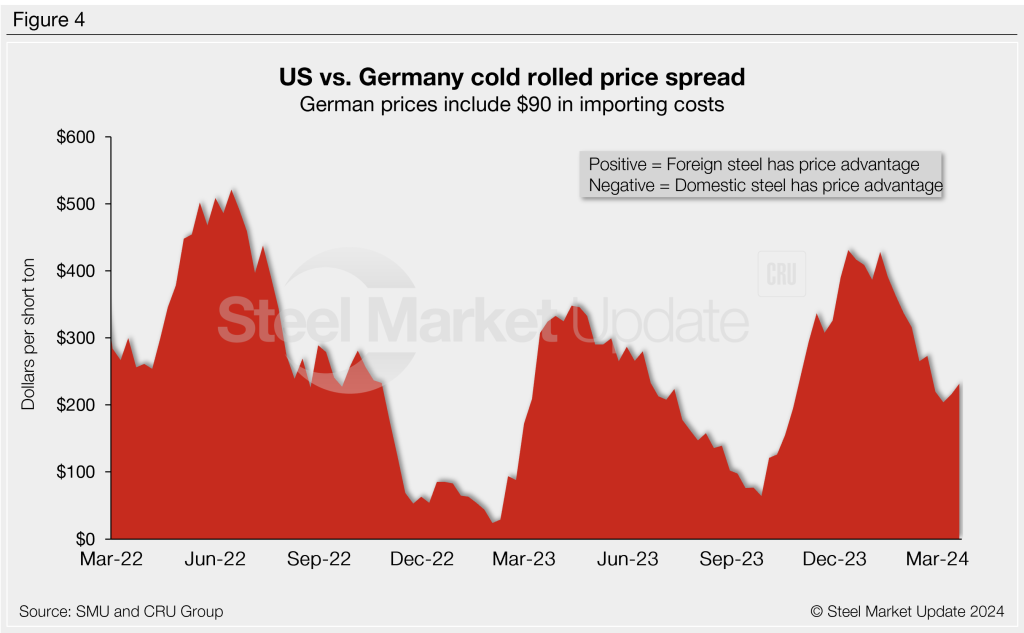
Figure 5 compares all five price indices. The chart on the left shows historical variation from Feb. 1, 2022, through present. The chart on the right zooms in to highlight the recent volatility in US pricing since mid-2023.
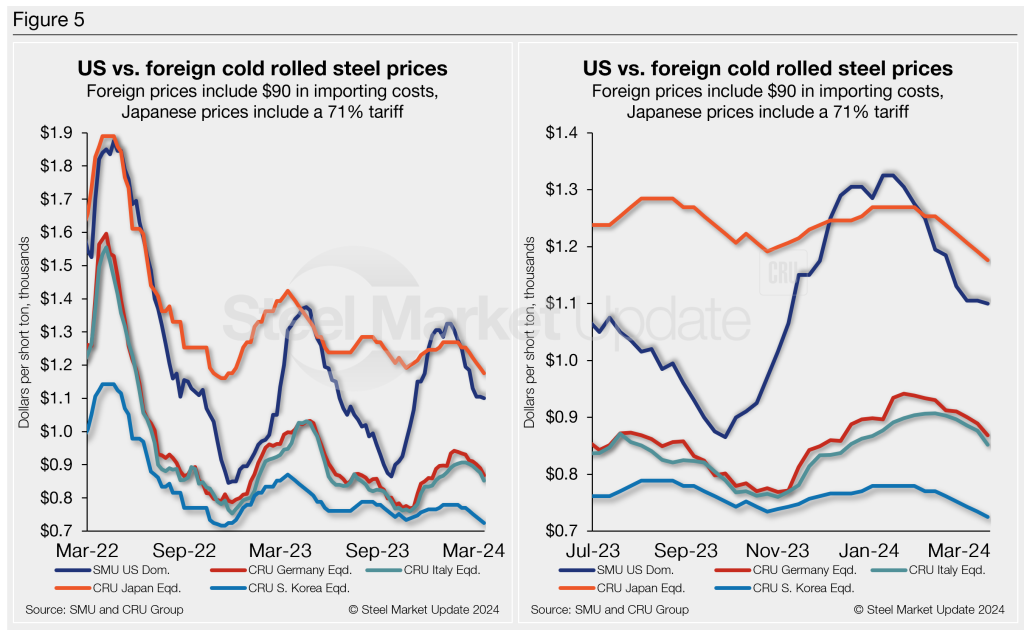
Notes: We reference domestic prices as FOB the producing mill, while foreign prices are CIF the port (Houston, NOLA, Savannah, Los Angeles, Camden, etc.). Inland freight from either a domestic mill or a port is important to keep in mind when deciding where to source from. It’s also important to factor in lead times too. In most market cycles, domestic steel will deliver more quickly than foreign steel.
Section 232 tariffs are no longer considered in these prices. That’s because, effective Jan. 1, 2022, the blanket 25% Section 232 tariff was removed from most imports from the European Union. It as replaced by a tariff rate quota (TRQ). Therefore, the German and Italian price comparisons in this analysis no longer include a 25% tariff. A similar TRQ with Japan went into effect on April 1, 2022. South Korea is subject to a hard quota rather then the 25% tariff.

David Schollaert
Read more from David SchollaertLatest in International Steel Prices

Doubled S232 tariff holds US HR prices below EU
David Schollaert presents this week's analysis of hot-rolled coil prices, foreign vs. domestic.

Higher US CR prices inch closer to EU, Japanese tags
US cold-rolled (CR) coil prices continued to tick higher this week, while offshore markets were mixed.

Stacked S232 keeps US HR prices below EU
US hot-rolled coil prices crept up again this week but still trail imports from Europe.

Doubled S232 lifts EU, Japanese CR prices over US tags
US cold-rolled (CR) coil prices edged up again this week, and most offshore markets moved in the opposite direction. But the diverging price moves stateside vs. abroad did little to impact pricing trends. The bigger impact was from Section 232, which were doubled to 50% as of June 3. The higher tariffs have resulted in […]

CRU: Sheet demand remains weak, tariff changes again alter markets
Subdued demand has continued to weigh on steel sheet prices globally.
